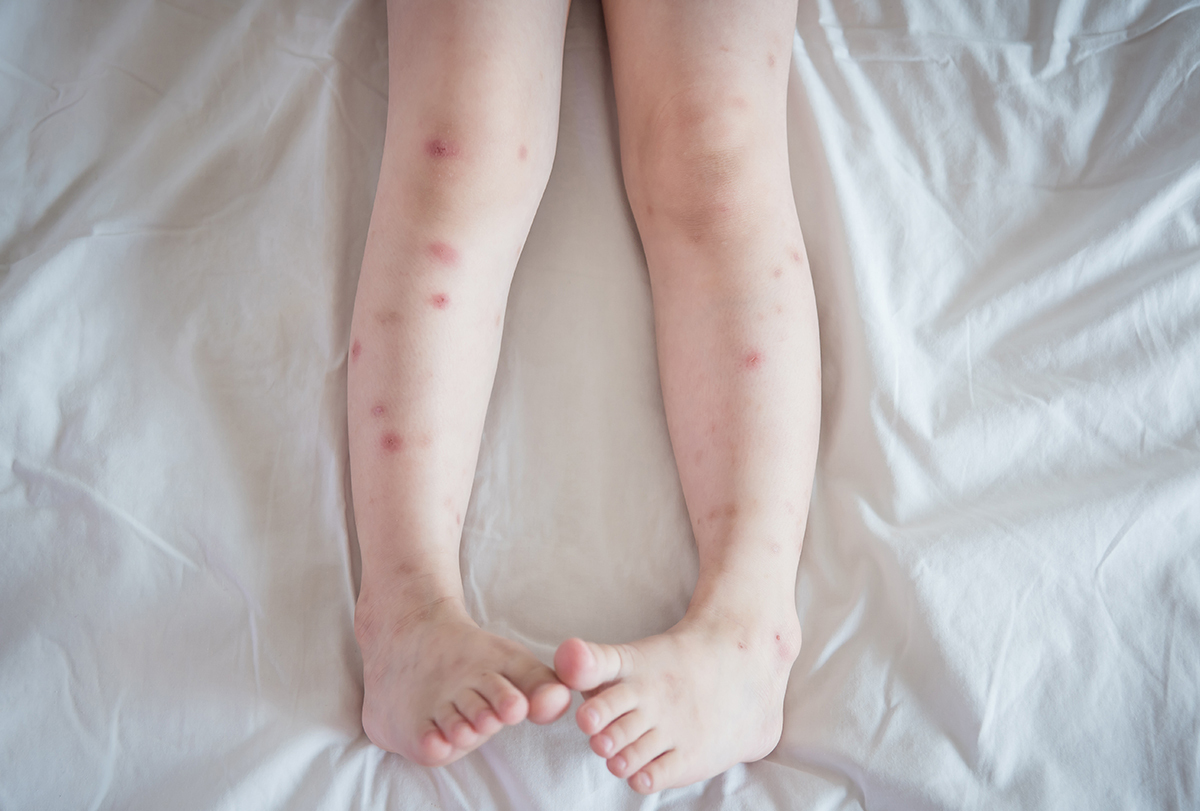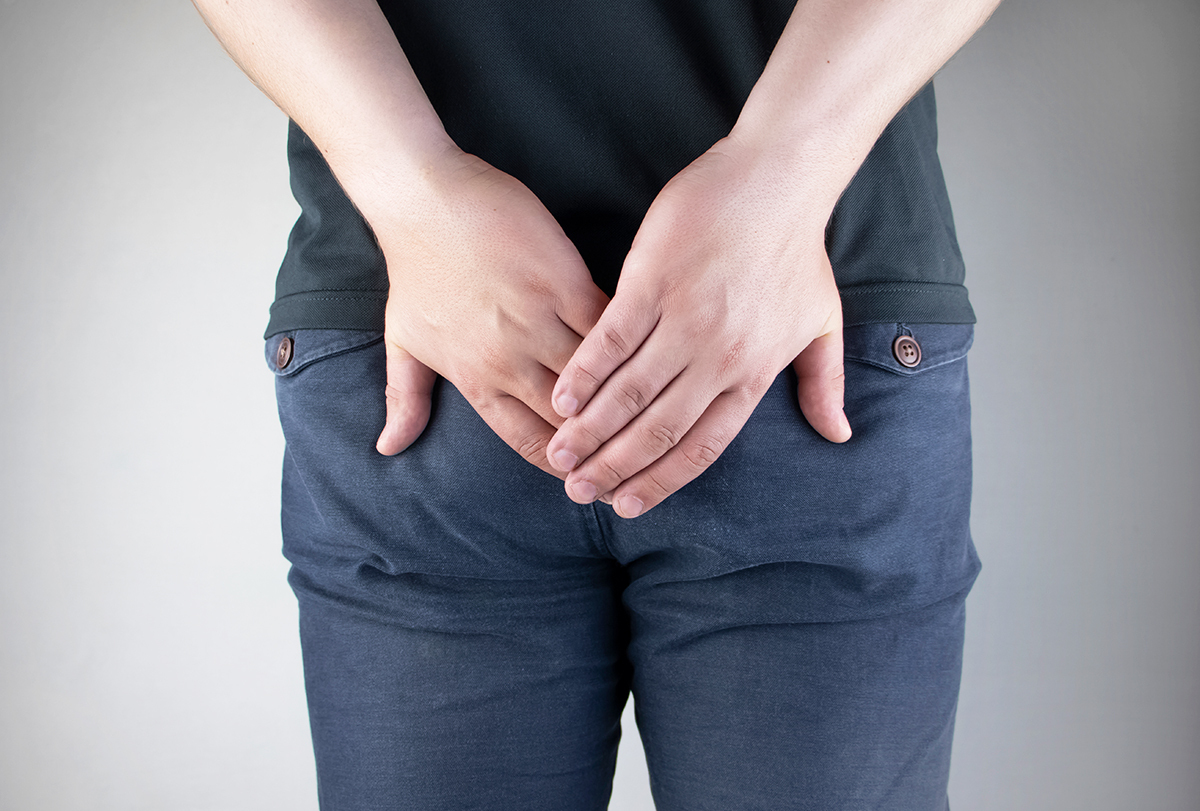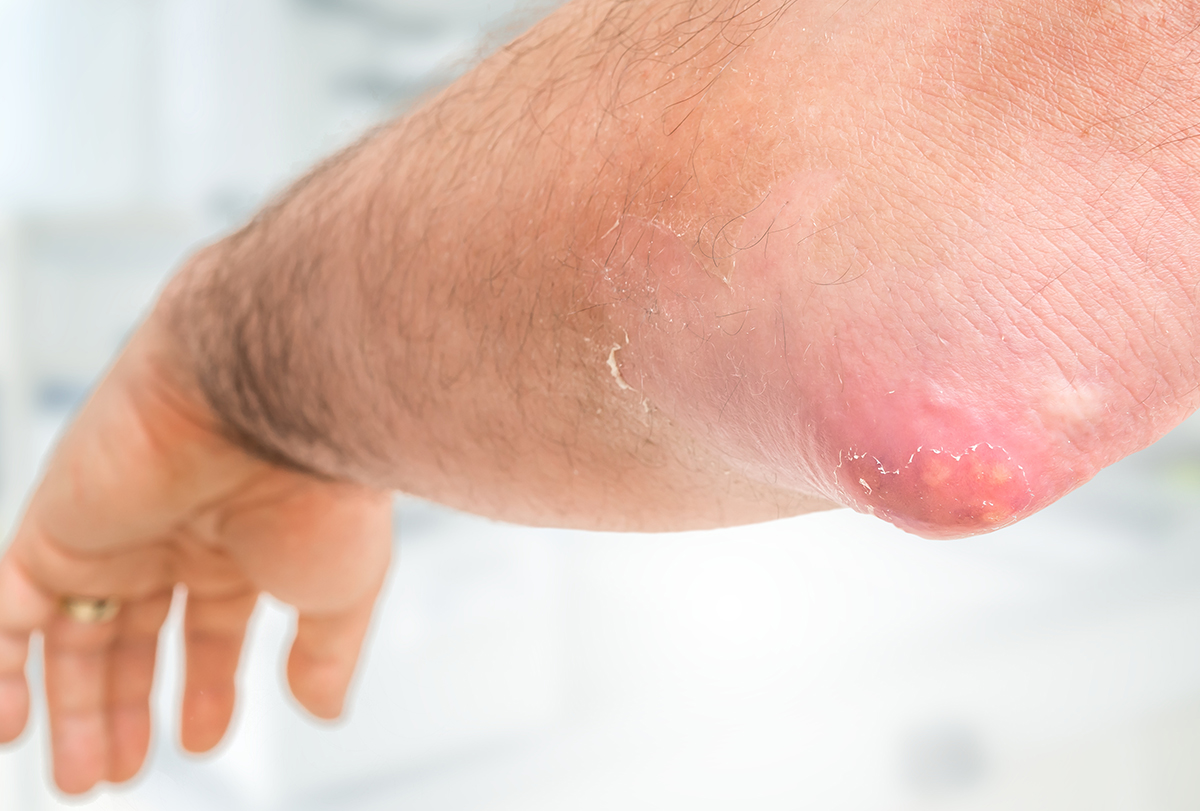
In this article:
A carbuncle is a collection of boils (or multiple coalesced furuncles) that are interconnected under the skin. These develop when several hair follicles in a localized area of the skin get infected by bacteria.
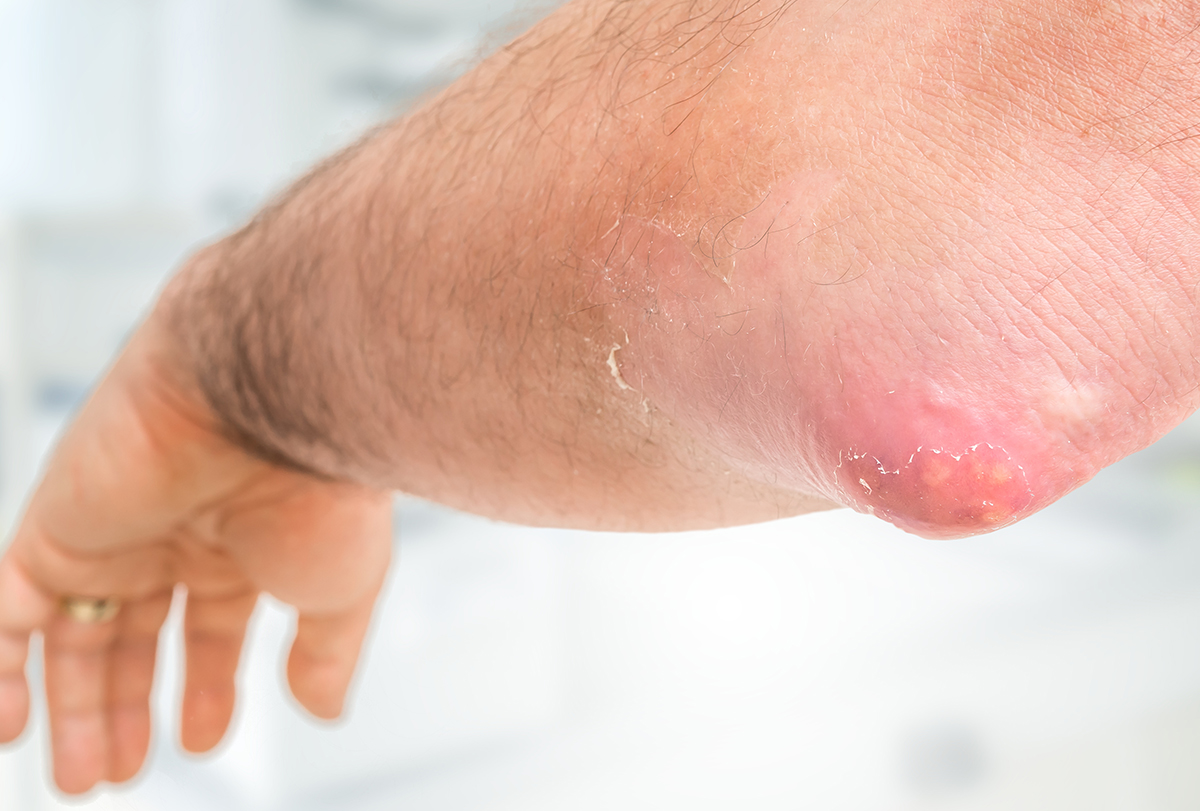
The body responds by releasing germ-fighting substances to the site of infection, causing inflammation in the area. This inflammation manifests in the form of redness, pain, blistering, and pus formation. This article will discuss the various ways to treat carbuncles.
Home Remedies for Carbuncles
Here are some easy-to-do natural remedies for carbuncles that can promote fast healing:
1. Apply a warm compress
Gentle heat therapy is an easy way to make the pus inside the carbuncle rise to the surface so that it drains easily. It is only after this pus is fully removed that the infection will subside and the skin will begin to heal.
When preparing a warm compress, make sure not to use water that is too hot, especially on children.
How to use:
- Soak a clean washcloth in warm water and wring out the excess liquid. Make sure that the water is not too hot to avoid causing burns.
- Lightly press the damp cloth on the affected area for 10–15 minutes.
- Repeat three to four times daily until the boil starts oozing out the pus.
- Gently wipe off the pus with a cotton swab/pad.
- Wash the area with an antiseptic soap and let it air dry.
- Cover the area with a loose gauze bandage.
- Apply a new dressing every day until the pus drainage stops.
Note: Let the boils drain on their own rather than squeezing or picking at them.
2. Use tea tree oil
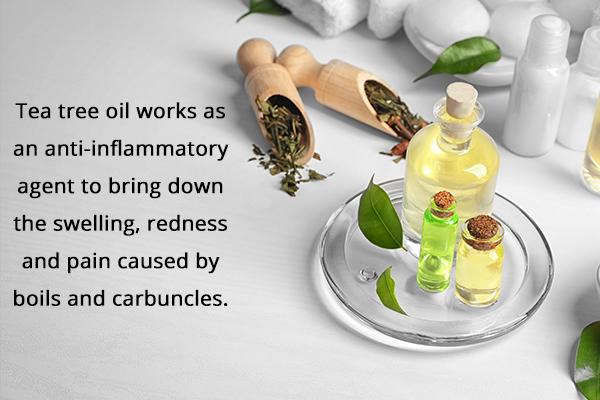
Essential oils are potent liquids extracted from medicinal plants that can help heal a variety of ailments, including skin infections. (1) One such oil is tea tree oil, which is specifically effective against the staph bacteria that cause carbuncles as well as acne.
In addition to its strong antibacterial properties, this oil also works as an anti-inflammatory agent that can bring down the swelling, redness, and pain caused by the boils. Thus, it helps to shrink and dry out the boil. (2)(3)
Note: Tea tree oil is very strong at its original concentration and can be too harsh for the skin when applied directly. Thus, you must always dilute it in a carrier oil before topical use.
How to use:
- Combine a few drops of tea tree oil and 1 tablespoon of your preferred carrier oil (such as almond oil and olive oil).
- Apply this mixture to the boils.
- Let it sit for a few minutes and then rinse it off with water.
- Do this daily until the boils heal.
3. Try using turmeric
Turmeric is well renowned for its healing properties, which can be traced back to its chief bioactive compound called curcumin. It is known to exhibit antimicrobial and antioxidant effects that help kill the carbuncle-causing bacteria and promote skin repair, respectively. (4)
The antioxidants in turmeric also help curb the inflammation in the infected tissue, thus relieving the pain, swelling, and redness associated with carbuncles. (5)
How to use:
- Put 1 teaspoon of turmeric in a clean bowl and mix in a few drops of castor oil to make a thick paste.
- Apply this paste to the affected area and leave it to dry for 30–45 minutes.
- Rinse it off with lukewarm water.
- Do this daily for a few days.
4. Dab on some honey

Honey is widely acknowledged for its multiple skin benefits that can be utilized for treating carbuncles.
For starters, it offers significant antibacterial activity that can help fight the underlying skin infection. Plus, it provides deep, long-lasting hydration, which is essential for proper skin healing.
Honey is also rich in several nutrients and antioxidants that help repair the damaged skin and relieve the underlying inflammation. Lastly, it forms a thick protective layer over the damaged skin to ward off secondary infections as the wound heals. (6)(7)
Combining honey with other skin-healing ingredients will yield better results than using them individually. (8)
How to use:
- Apply a small amount of local raw honey all over the carbuncles.
- Cover the area with a bandage and leave it overnight.
- Do this every night until the boils go away.
Carbuncles: Causes and Symptoms
Human skin is naturally populated by several strains of bacteria including Staphylococcus aureus (9) which if allowed to overgrow can cause an infection.
Lack of skin hygiene, weakened immunity, and other contributing factors can lead to the buildup of sebum, dead skin cells, and other impurities inside your pores.
This congestion in the pores provides the perfect environment for the skin-dwelling staph bacteria to proliferate rapidly and give rise to infection as they feed on the oil and cellular debris. Meanwhile, the hot and humid conditions inside the pores facilitate their breeding process.
The growing population of bacteria ultimately infects the hair follicle inside the pore, which swells up and pops on the surface as a boil or furuncle. It starts as a red-purplish painful bump under the skin that fills with pus over time and forms a small yellowish-white head. (10) As more pus collects inside the boil, the increasing upward pressure ruptures the tip and causes the fluid to drain out.
In some cases, this infection may spread to the surrounding hair follicles and tissue, causing multiple interconnected boils in a small localized area. This collection of boils is referred to as a carbuncle. (11)
Carbuncles are usually more deep seated than furuncles, wherein the infection may extend to the fat layer that lies beneath the skin. (12) As a result, they don’t readily form a head and release the pus collected inside, which leads to a longer healing process.
Treatment for Carbuncles
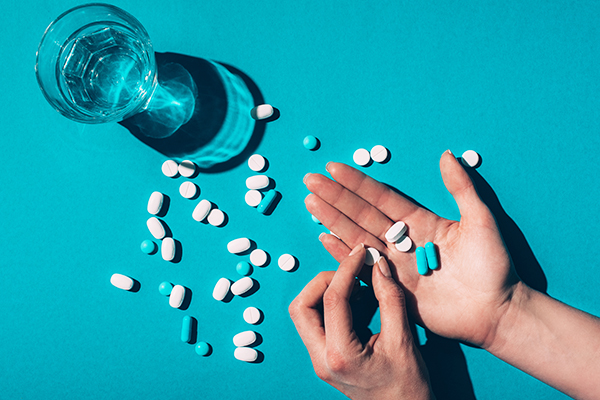
The standard medical interventions to treat carbuncles include the following:
- The first-line treatment for carbuncles is oral antibiotics such as dicloxacillin and cephalosporins.
- The doctor may also prescribe topical antibiotics such as clindamycin and mupirocin along with oral medication for faster healing.
- If the boils keep coming back, the doctor may recommend long-term preventive measures such as using a benzoyl peroxide-containing body wash or antibacterial soap for bathing. (13)
- Deep, stubborn, or painful carbuncles that do not respond well to the above-listed measures can be surgically drained by a doctor.
Diagnosing Carbuncles
In most cases, the doctor can identify a carbuncle just by examining the infected area. If you are frequently getting boils or carbuncles, the doctor may order a few tests to diagnose any risk factor or underlying condition that is triggering this recurrence such as diabetes or an immunocompromising condition. (14)
Preventive Measures Against Carbuncles
Prevent carbuncles from spreading and recurring by following these measures:
- Don’t squeeze or pierce the boils as this can cause deep tissue damage, which can lead to scars. Plus, the topical pressure can spread the infection deeper into the skin and surrounding tissue. (15)
- Practice proper hand hygiene, especially before and after treating the boils or touching food. This will help keep the bacteria from spreading to other surfaces or other areas of the body and inside your system (via contaminated food). As a general rule of thumb, thoroughly wash your hands with soap for a minimum of 15 seconds at frequent intervals. Also, carry an alcohol-based hand sanitizer with you to clean your hands on the go.
- Clothes that come in contact with the boils must be washed in hot, soapy water and dried in peak sunlight or on the hot setting of an automatic dryer.
- Maintain optimum personal hygiene by bathing or showering every day.
- Don’t share your clothes, towels, bath water, razors, and other personal items to prevent the infection from spreading to others.
- If the carbuncles keep coming back at the same spot or another area, go for a proper medical checkup to identify any underlying illness or skin problem that may be triggering this recurrence and to get proper treatment. (14)
Why Do I Keep Getting Boils?
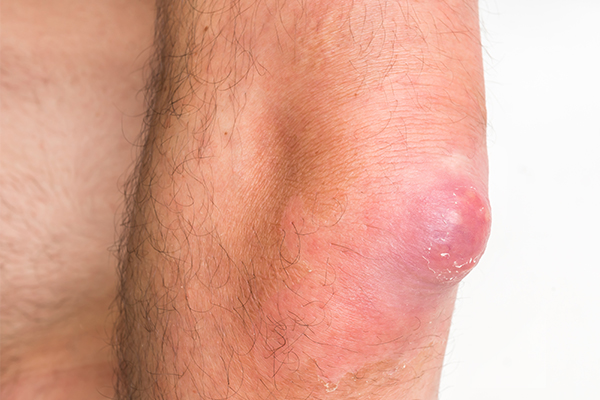
If you frequently get boils or carbuncles, it could be a sign of weakened immunity due to some underlying medical condition such as cancer, diabetes, or chronic infections. Low immunity makes your body less capable of fighting infections such as this one and thus makes you prone to repeated flare-ups.
People with preexisting allergies and eczema are also more susceptible to getting carbuncles, often repeatedly. In such a case, you must consult a dermatologist to identify the root cause of your problem and get that treated along with the boils. This will ensure that the carbuncle goes away for good. (10)
Final Word
Pustular boils only start to heal once the infected fluid inside them is removed. Furuncles tend to ooze it out on their own once they have grown to their maximum size, but larger boils and carbuncles are more stubborn and may require extra effort to induce pus drainage.
This article listed some simple home remedies to help you drain or heal your carbuncle at home in a safe manner. However, if the boils persist or become worse despite proper care and home treatment, you must visit a doctor for antibiotic medication and surgical drainage.



